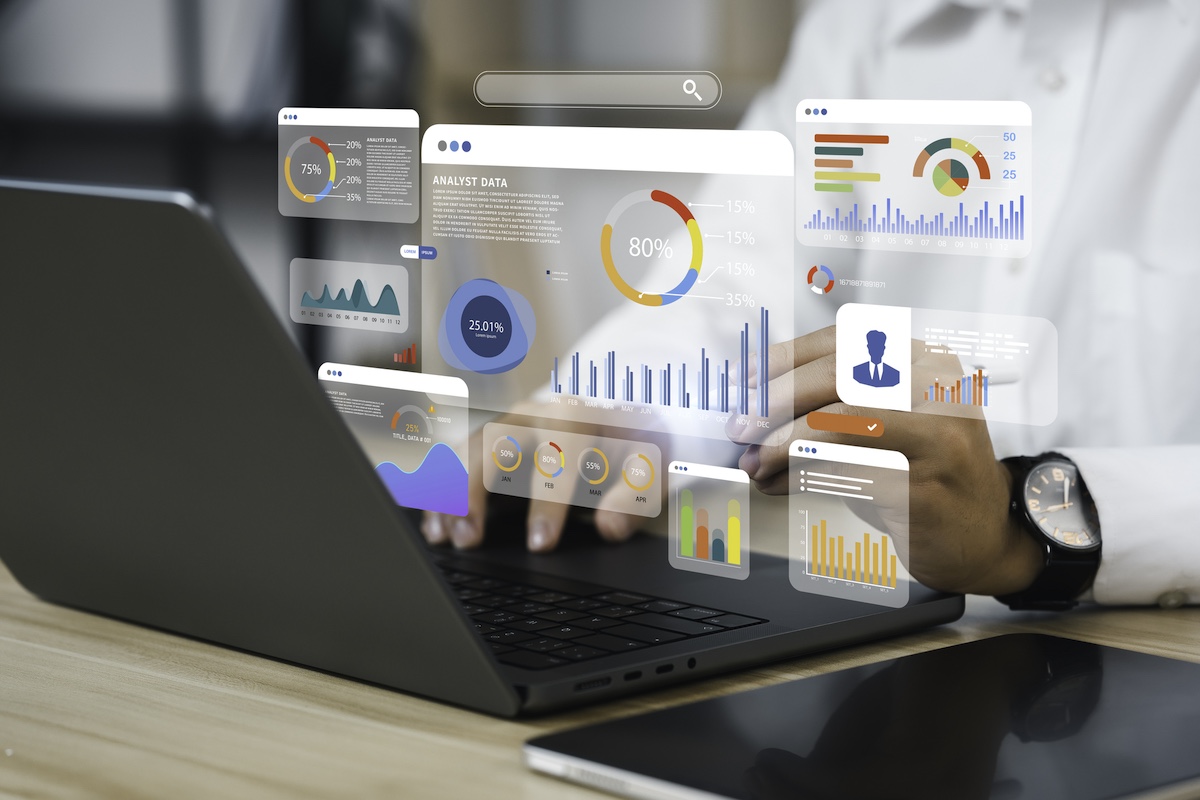Today’s companies collect more customer data than ever. Unfortunately, many companies still aren’t using it for its full effect.
Customer analytics allow you to take the customer data you’ve collected and assess, aggregate and analyze it to understand trends, make forecasts and better understand your customers. In doing so, you can develop actionable insights that drive your business forward.
Ultimately, without analytics, you’re flying blind when it comes to knowing what your customers want, how to develop lasting customer satisfaction and how to sell effectively. Instead, a 360-degree view of your customers—available through modern analytics tools—can give you the business intelligence you need to make better, more informed, and effective decisions.
Here are four key ways can analytics support your business and how can you implement them.
Leveraging Data for Competitive Advantage
There are so many ways that your customer data can be used and leveraged to create competitive advantages for your business. For example, leveraging customer analytics can help you:
- predict customer behavior and trends
- increase ROI by targeting the right customers at the right times with the right offers
- reduce marketing costs by making your marketing more effective
- segment customers more effectively, increasing response rates and retention
- improve customer loyalty with more personalized and relevant communications
- and more!
This isn’t just speculation—the data backs this up. According to research from McKinsey, companies who use customer analytics extensively are “significantly more likely to outperform the market,” seeing results like:
- 93% higher profits and revenue
- 82% higher sales
- 115% higher ROI
This is compared to companies who don’t use customer analytics extensively.
Not only can customer analytics help you predict customer behavior and trends, resulting in more effective marketing, higher customer loyalty, sales, ROI and so on, but you can also leverage real-time analytics for strategic and more agile decision-making.
Real-time analytics allow you and your team to react accordingly to each individual and their unique needs, behaviors and preferences, and not just use aggregated data from past customers. Real-time analytics, such as speech and predictive analytics, which we’ll get into more below, give you insight during customer conversations, as customers move through your website or app flow, and during other key points of the customer journey to be able to communicate and sell effectively.
Customer Analytics and Business Decisions
Customer analytics can—and should—be used to make better business decisions. How? A good place for call centers to start is with predictive and speech analytics.
Predictive analytics use machine learning and analytics modeling to analyze historical data, uncover patterns and trends and then predict and chart out future trends and behavior based on the historical data. Predictive analytics are a great way to model customer behavior, whether it’s assessing how customers will shop this holiday season (compared to last), analyzing how a segment of customers might respond to an upcoming marketing campaign, or determining which customers will likely be most interested in your new product launch.
Speech analytics analyze recorded (or live) calls to assess word choice, tone of voice, language patterns and more and provide analysis on sentiment, communication problems, common customer complaints and so on. Speech analytics can be used on historical data or provide real-time insight and feedback through real-time speech analytics software.
Both of these analytics tools and methods give you additional insight into each customer conversation and interaction, allowing you to create aggregated trends that let you serve customers better, as well as interact more effectively with individual customers.
Ready to perfect your CX?
Not only do these tools involve customer-facing business decisions such as when to market a new product, how long to run a sale, or what kinds of call scripts to use, they can also provide crucial insight into who your highest-value customers are and help you find untapped sources of potential VIPs. For example, having stronger customer data can help you calculate your average customer’s LTV and CAC (Lifetime Value and Cost of Acquisition). From there, having strong customer analytics will allow you to find customers with a similar profile, allowing you to develop them into higher-value customers.
By identifying customer segments more clearly and accurately, you have valuable business data you can use to market and sell more effectively, develop customer loyalty, predict customer behavior and enhance satisfaction.
Enhancing Customer Satisfaction Through Analytics
Speaking of customer satisfaction, customer analytics can be a strong support for improving CSAT as well.
One area that supports this strongly is customer sentiment analytics. Customer sentiment analytics can be a function of speech analytics, but they can also be used for written communication, either directly (i.e. emails to your customer service help desk) or indirectly (i.e. social media mentions). Sentiment analytics analyze word choice, tone, emotion and more to help you understand on a macro level the general emotion and sentiment customers feel toward your company.
Understanding how customers talk about you and to you can help you create better customer experiences to improve customer satisfaction and growth. If you understand that most customers speak positively about you on social media, but come to the phone angry, perhaps there are too many transfers or too long of a wait before customers get to a customer service agent.
Knowing this level of detail not only allows you to solve problems for your customers—thus creating better experiences and higher levels of satisfaction—but having sentiment analysis also helps your agents interact with customers more appropriately in real-time, leaving them feeling more understood and satisfied with their service experiences.
Transforming Data into Actionable Business Intelligence
Of course, all of this customer data not only has to be collected, assessed and monitored, it also has to be analyzed and then transformed into actionable items that can support your business growth.
Leveraging analytics for customer understanding, cost efficiency and optimized performance typically requires a detailed analytics and BI team. But for many modern companies, a BPO provider is able to provide just as much, if not more, value than an in-house team.
For example, our customer analytics services at Global Response offers you:
- state-of-the-art analytics technology and software (without having to pay for in-house licensing)
- tracking and forecasting of customer behavior and sentiment
- speech and predictive analytics that support your sales, retention and product strategies
- identification of high-value customers and customer segments
- actionable business insights and intelligence to optimize performance, efficiency, conversions, growth strategies and more
With an outsourcing team you can trust handling customer analytics, you can ensure that your data and analytics are transformed into actionable business intelligence that will help you make data-driven decisions to drive business growth, customer satisfaction and ongoing loyalty.
Ready to see how Global Response can help transform your contact center analytics? Connect with an expert from our team today—we’ll show you the Global Response difference.




